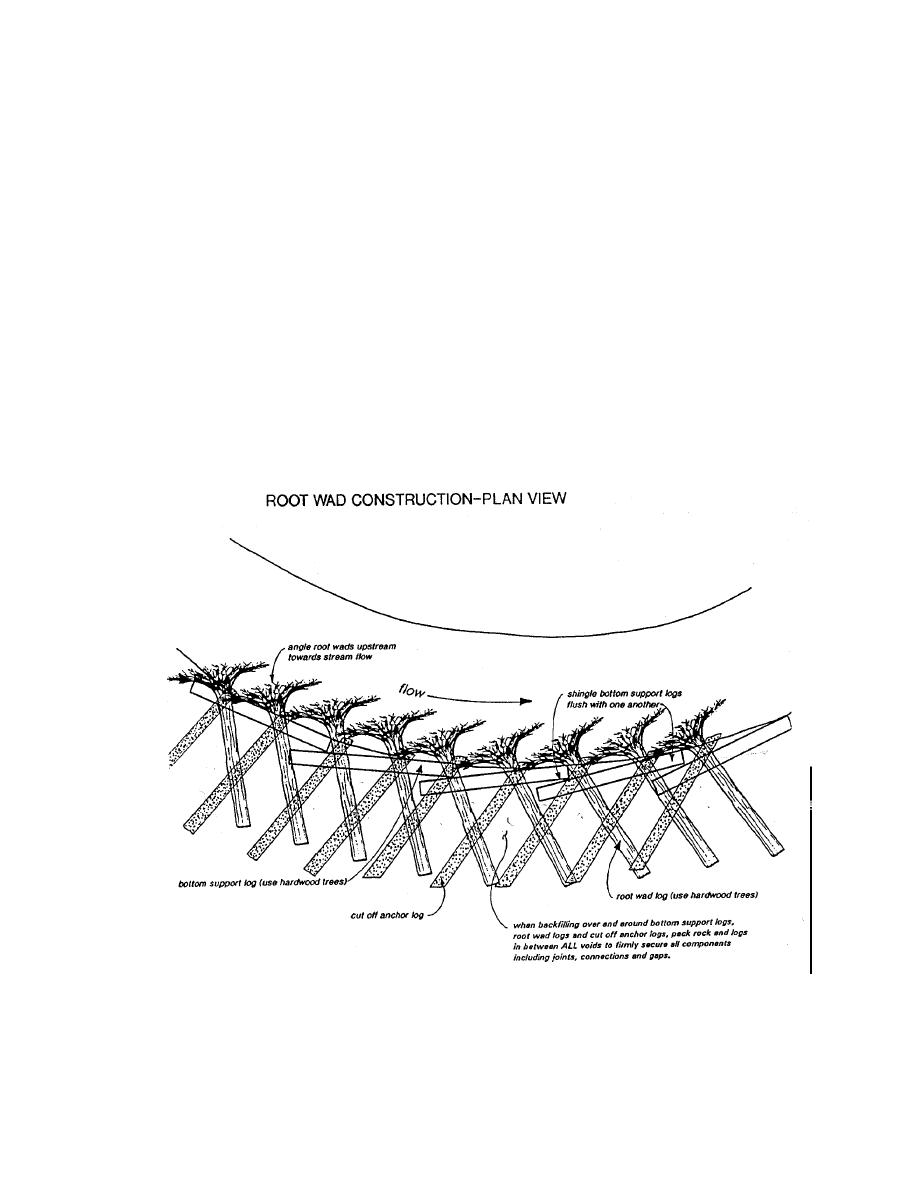
Appendix B: Bioengineering for Streambank Erosion Control -- Guidelines
Figure 17 shows a schematic of a log revetment used on the Roaring Fork River,
Colorado, near Basalt. A geotextile coir roll, called a Vegetations-Faschinen in Germany,
where it originated, is placed above the top log in the revetment so its top is just even with
or slightly above the normal water level. The roll is often referred to in this country under
various trade names such as Fiber Roll, Fiberschine, and Bio-log. It is used in conjunction
with a geotextile mat which is placed shoreward of the roll, backfilled with soil, and planted
or seeded with wetland plants. The geotextile roll and mat trap sediment, allow plants to be
planted in them, and are biodegradable. Note that the top log is placed in an overhanging
fashion with the coir roll on top to provide shade and cover for fish. Figure 18 shows an
installed log revetment on the Roaring Fork River. Volume II presents a case study that
includes evaluation of such a treatment, among others on western Colorado rivers and
streams and notes local velocities to which this treatment and others were subjected. On one
reach of the Roaring Fork, this structure failed because it was not keyed into the bed of the
stream. Scour at the toe caused structure failure. On another reach, it worked just fine.
These structures must be properly protected at the toe and at the upper and lower ends with
rock and hard points, respectively.
Figure 17. Schematic of root wad construction (from Bowers, 1992).
B-33




 Previous Page
Previous Page
